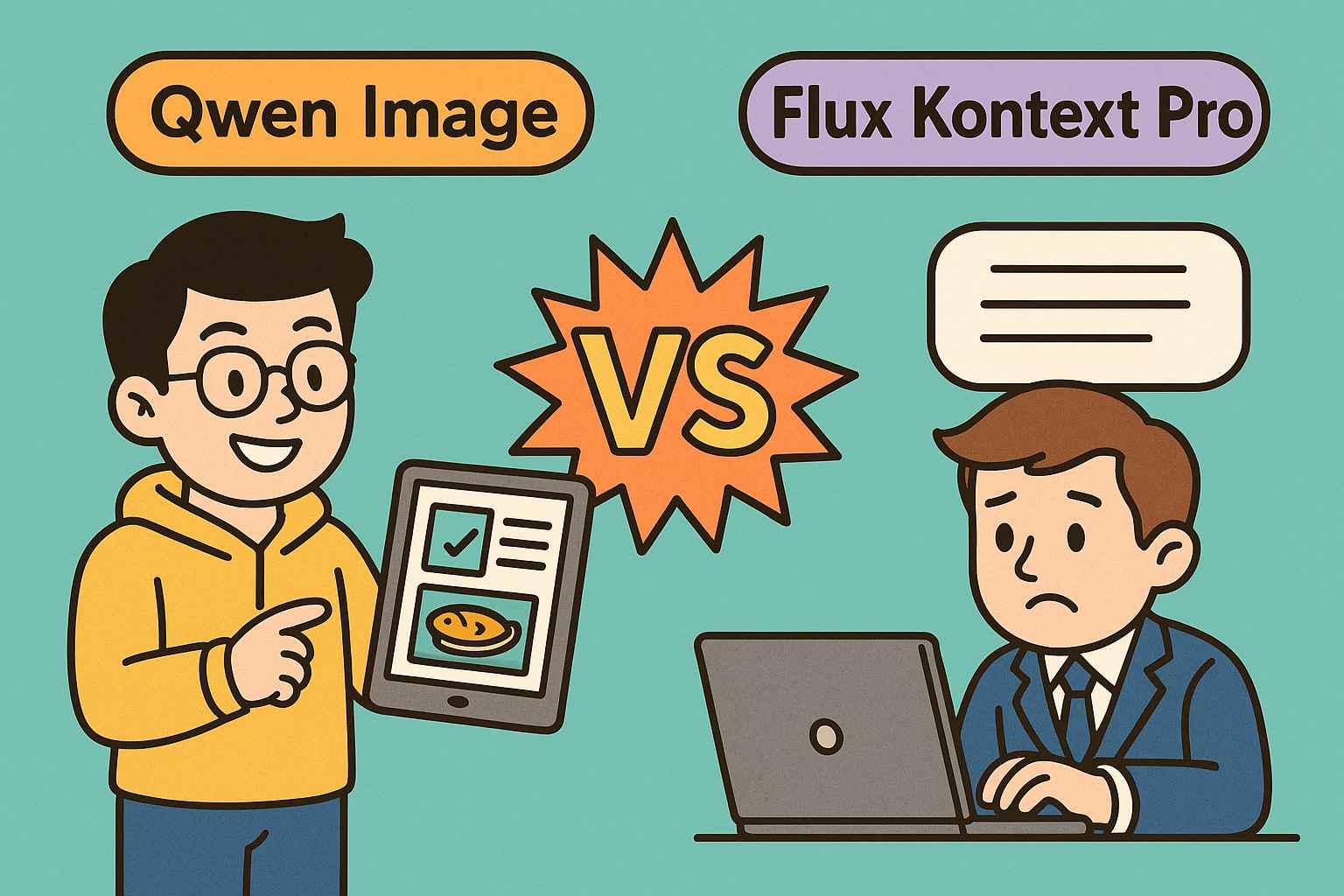Qwen Image vs Flux Kontext Pro: Which Multimodal AI Model Performs Better?
Qwen Image vs Flux Kontext Pro: Which Multimodal AI Model Performs Better?
If you're into multimodal AI or visual-language models, you've probably heard about Flux Kontext Pro — a solid model that performs well across English-centric image understanding tasks.
But now, Qwen Image, a new model from Alibaba, is changing the game — especially for Chinese content. From our hands-on testing, we can confidently say:
👉 Qwen Image outperforms Flux Kontext Pro in accuracy, context awareness, and overall usability in multilingual and real-world scenarios.

What Is Qwen Image?
Qwen Image is a multimodal vision-language model developed by Alibaba’s Qwen team. It's designed to handle both image and text inputs simultaneously and excel in:
- Image understanding
- OCR text recognition (especially for Chinese characters)
- Visual question answering (VQA)
- Cross-modal reasoning
- Image captioning and contextual comprehension
Think of it as an AI that really gets what's in an image — down to the details, especially when that image is in a real-world, multilingual format.
Qwen Image vs Flux Kontext Pro: A Direct Comparison
We evaluated both models in real-world use cases — like recognizing text-heavy restaurant menus, annotated screenshots, and infographic posters.
Here's how they stack up:
| Feature | Qwen Image | Flux Kontext Pro |
|---|---|---|
| Chinese OCR | ✅ Excellent, precise even with small fonts | ❌ Often misses or misreads characters |
| Contextual VQA | ✅ Answers are relevant, logical & nuanced | ⚠️ Answers often vague or overly generic |
| Image Captioning (CN/EN) | ✅ Handles mixed language scenarios smoothly | ⚠️ Works best only with English content |
| Cross-modal Reasoning | ✅ Strong contextual linking | ❌ Weak on inference or logical chaining |
| API Usability | ✅ Available via Tongyi, OpenRouter, and open | ⚠️ Limited deployment options |
TL;DR: Qwen Image is more accurate, multilingual-aware, and deployable. Kontext Pro is decent — but lags in non-English performance and nuanced understanding.
Real Case: Menu Reading Test
We uploaded a menu image with mixed Chinese-English dishes and asked:
"What are the top 3 recommended dishes in this restaurant?"
Qwen Image replied:
"The top dishes are 酸菜鱼 (Sour Fish), 毛血旺 (Spicy Blood Stew), and 水煮牛肉 (Boiled Beef). These are marked as Chef’s Recommendations."
Flux Kontext Pro replied:
"This restaurant serves Chinese food. Popular dishes include hotpot."
You get the idea — one sees details, the other gives generalizations.
Where Can You Use Qwen Image?
Here are some practical use cases:
- E-commerce: Understand and label product images with multilingual labels.
- Education: Visual tutoring and diagram understanding in Chinese & English.
- Customer Service: Image-based Q&A for real-world documents or screenshots.
- Content Moderation: Image+text moderation on social media or platforms.
How To Try It?
You can access Qwen Image via:
Pro tip: If you're a developer, consider deploying it on a VPS like LightNode — affordable, hourly billing, and perfect for AI services.
FAQ
Q1: Can I use Qwen Image for free?
Yes. You can access it via Tongyi’s public API or try it through OpenRouter. There’s also a Hugging Face version for local testing.
Q2: Can I deploy Qwen Image locally?
Yes! The model is open-source and available on Hugging Face. You’ll need a decent GPU, or you can deploy it via cloud platforms.
Q3: What’s the best VPS to run Qwen Image?
We recommend LightNode for testing and small-scale production use. It's fast, cheap, and supports image-heavy applications.
Q4: Does Qwen Image support image generation?
No, it focuses on understanding and question-answering — not image generation.